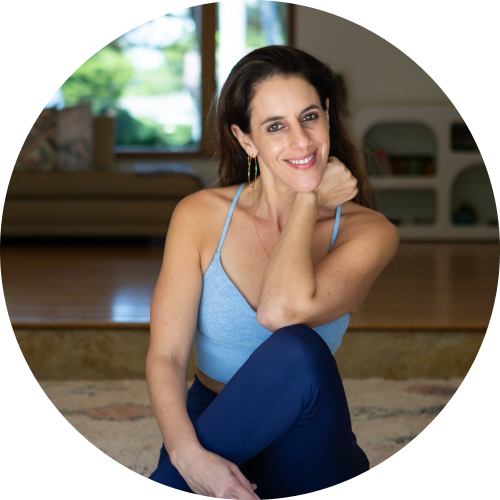
Lauren Ohayon is the creator of Restore Your Core® (RYC®), a comprehensive and sustainable whole-body fitness program that empowers women to achieve ideal pelvic floor / core function and be strong, long, mobile and functional.

Postpartum recovery can be difficult for anyone, but there are particular considerations to keep in mind after a C-section. Read on to learn more about how to begin a safe and supportive exercise regimen for C-section recovery.
Get free expert advice and start your postpartum healing journey today
Table of Contents
If you’ve recently given birth via Cesarean section, you may have been given some guidelines for your recovery, like “don’t lift anything over X pounds for X weeks, and keep your sutures clean.” But beyond that, it’s likely that you didn’t get much guidance on what returning to regular physical activity might look like. And it’s even less likely that you’ve received advice about how to do that while juggling a baby (much less a baby and older kids, or multiple babies!). If you’re lucky, your doctor will refer you to pelvic health PT once your sutures have healed. If not, you’re on your own. So what to do?
The words I repeat over and over to all postpartum clients are these: Be patient. Listen to your body. This goes double for those of you who had a surgical birth. A C-section is major abdominal surgery. Not only have you carried at least one fetus in your uterus for 40ish weeks, you have also just endured a procedure that cuts through layers of skin, fat, muscle, fascia, and the uterine wall. You are healing not only from pregnancy but also from a great deal of trauma to the tissues of your abdomen. If the C-section was unplanned, you’re also likely dealing with some strong feelings about your birth experience. And then there’s the fact that you have an infant to care for while you recover. In order to recover well, you must be gentle and patient and use exercises that are tailored to your body’s needs. You may start feeling more comfortable in your body within a few months, though a full recovery can take up to a year.
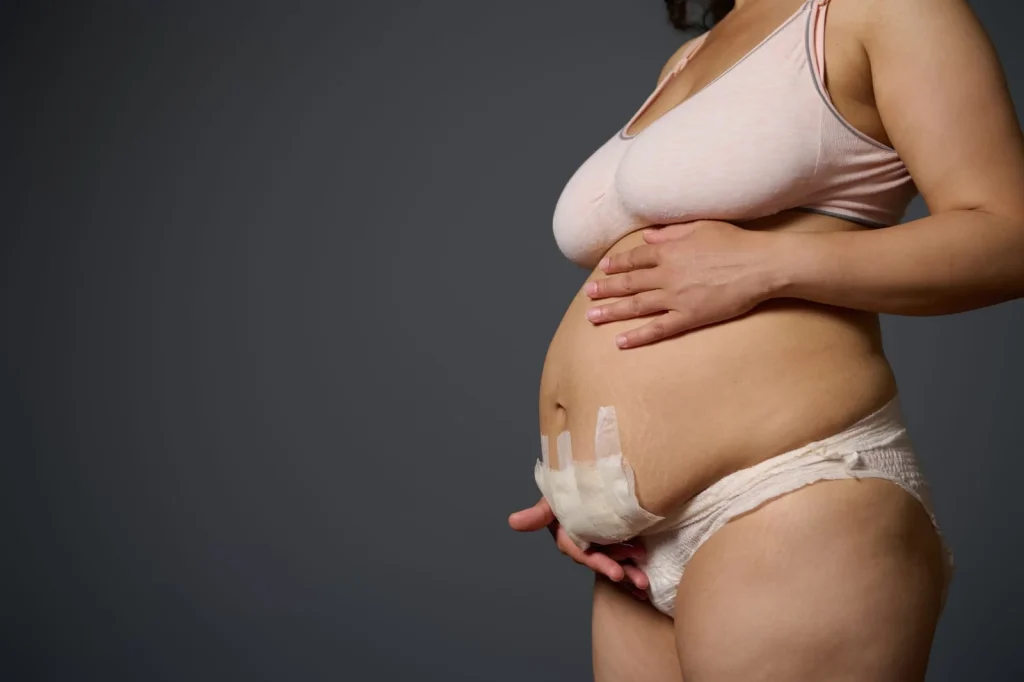
Take 3 steps toward doing the things you love again postpartum
Most people require 6-12 weeks to heal from the surgical incisions, which include sutures on the uterus, inside your abdominal wall to rejoin muscle and fascia, and visible sutures on your skin. Additionally, the uterus itself has a significant internal wound from where the placenta was removed. As your body recovers from child birth, the uterus spends several weeks healing that internal wound and gradually returning to its pre-pregnancy size. During this period your incisions are also healing. It’s important to note that infections can occur at the incision sites, potentially delaying the healing process. To prevent this, ensure you keep your wounds clean and follow all care instructions provided by your doctor.
You may find that for the first few days, it is helpful to brace your incision site with a pillow or your hand when you move around or cough in order to keep the sutures intact. Ideally, you would have about a week to rest, mostly in bed (though getting up and about a bit is also encouraged to prevent the formation of blood clots). Having someone available to ensure you stay fed and hydrated during this acute healing phase is ideal. A postpartum doula, if within your means, can be a huge help with this.
Getting up and moving around as soon as you’re able to will help your recovery, but the balance between rest and activity is important. This is not the time to rearrange your pantry or take a ten-mile hike, but it is a good time to do some gentle upper body movements and to start walking around your house slowly. Begin with maybe 5-10 minutes of activity at a time, and then rest. The first few weeks of life with a newborn can be demanding–feed, burp, change, sleep, repeat. Use the rhythms you’re establishing for your baby as opportunities to allow your body to move a bit and rest a lot.
Once your sutures have fully healed, you can begin more intentional movement. You will likely have made some trips out of the house for follow-up appointments at this point (please have someone else carry that heavy car seat, if at all possible). You have likely noticed that your core feels weak and sore; this is totally normal after abdominal surgery. Now is a good time to begin to extend any walks you may have been taking with or without your baby and to start some targeted exercise practices to help your body recover.
Discover the top 3 steps to regain your fitness and strength postpartum–free
Signs that you’re ready to start exercising after a C-section: Your sutures are completely healed, and you’ve been cleared by your doctor to exercise. You’re able to perform most of the activities of daily living, such as showering, cooking, etc. You might feel a bit tired, and you might notice other symptoms of postpartum recovery, but your energy levels seem relatively steady. You should always check in with your doctor before beginning any exercise program.
Some people, either due to cultural norms, personal preference, or on the advice of a physical therapist, will use an abdominal support garment such as SRC recovery shorts when they first begin exercising. There are pros and cons to using garments like these: on the one hand, you’ll feel supported and steady. On the other hand, relying on compression to provide the support that your abdominal muscles should be providing can prevent you from fully retraining the muscles–just like wearing an ankle brace is helpful in the initial phases of healing from a sprain, relying on the brace long-term is not going to make your ankle stronger. If you opted for external support in the very early postpartum phase, weaning off of it over the first month or two will give your core the opportunity to support you. Listen to your body, and pay attention to what it needs.
Get 3 (free) scientifically-proven steps and regain your postpartum strength and fitness
Once you’ve gotten the go-ahead from your doctor, the following post-c-section recovery exercises are a great way to begin adding more movement to your day. If you have time to perform all of these every day, great! But if not, just add one or two at a time. Stop if you feel like it’s too much. You are allowed to take it slow. “Bouncing back” from giving birth is a myth. Your body will take as long as it takes.
These exercises are intended to mobilize and strengthen the pelvic floor, core, spine, and hips. Be mindful of how you feel as you exercise: if you experience increased pain, bleeding, or discharge from the incision site, excessive fatigue, or abdominal discomfort, stop exercising and contact your physician.
1. Pelvic Tilts help get the pelvis moving and gently engage the core
2. Heel Slides are an easy way to begin training your core to respond to various loads
3. Modified Cat-Cow Stretch helps mobilize your spine, engages the core, and feels good after a long day of caregiving
4. Seated Marches
5. Side-Lying Leg Lifts
When you’re recovering from a C-section and juggling a new addition to your household, it can be hard to make time for self-care. It’s worth thinking ahead: who can help me by giving me time to do this? Resting while the baby naps is great. Can you take 10 minutes for yourself first? Your rest will be deeper, and you’ll get a little stronger every day. Sometimes, blocking out regularly scheduled time in the day (first thing in the morning is a personal favorite) can help you stay on track.
While the exercises above are gentle, you can modify or reduce any of them as needed. If something doesn’t work this week, you might try it again in another week or two. If you need more guided practice, a program like Restore Your Core® can be a huge help–the express classes are less than 15 minutes long, and you can even split them up if you need to.

You have to make yourself a priority in order to recover. This is incredibly difficult to do as a caregiver, but it is essential. Even 15 minutes every day–5 to drink a hot tea in peace, 10 to move–builds a habit of self-care that can last the rest of your life. Begin small. Be patient. Keep a journal of how your body feels, one week to the next. If you’re charting your child’s growth, are you tracking your own healing? Your long-term recovery plan should include regular exercise, actual meals instead of snacks, and sleep (maybe not the first year, but yes, you will sleep again). If you’re having a hard time figuring out how to make moving your body work well for you, a session with a movement coach or physical therapist can help you get started.
Remember: healing takes time, and your body is constantly changing. Be kind to yourself as you heal.
You can usually start gentle activities, like walking, within a few days after a C-section, but it’s generally recommended to wait about 6-8 weeks before beginning more strenuous exercise. Always consult your healthcare provider before starting any exercise routine.
Signs that your body is not yet ready for exercise include increased pain, bleeding, or discharge from the incision site, as well as feeling excessively fatigued or experiencing abdominal discomfort. If you notice these symptoms, stop exercising and consult your healthcare provider.
Avoid high-impact exercises, heavy lifting, intense abdominal exercises (like crunches and sit-ups), and any activities that put strain on your incision or core until your doctor gives you the all-clear.
Signs of overexertion include persistent pain, swelling, increased bleeding, fatigue, and difficulty performing daily activities. If you experience any of these symptoms, reduce the intensity of your workouts and consult your healthcare provider.
Gradually increase the intensity of your workouts by slowly adding more challenging activities. Start with low-impact exercises and slowly increase the duration and intensity of your exercise. Always listen to your body and consult your healthcare provider for guidance.
Progression to more intense workouts should be gradual and based on how your body responds. Ideally, you’d stick with C-section specific exercises for 8-12 weeks before progressing to more intense workouts.

“There is no thank you big enough for Lauren Ohayon existing and thinking and helping so many of us. Every time I do something I never thought I’d do again she is part of the reason why.”
Laura Gregg
in this FREE video and get the support you deserve
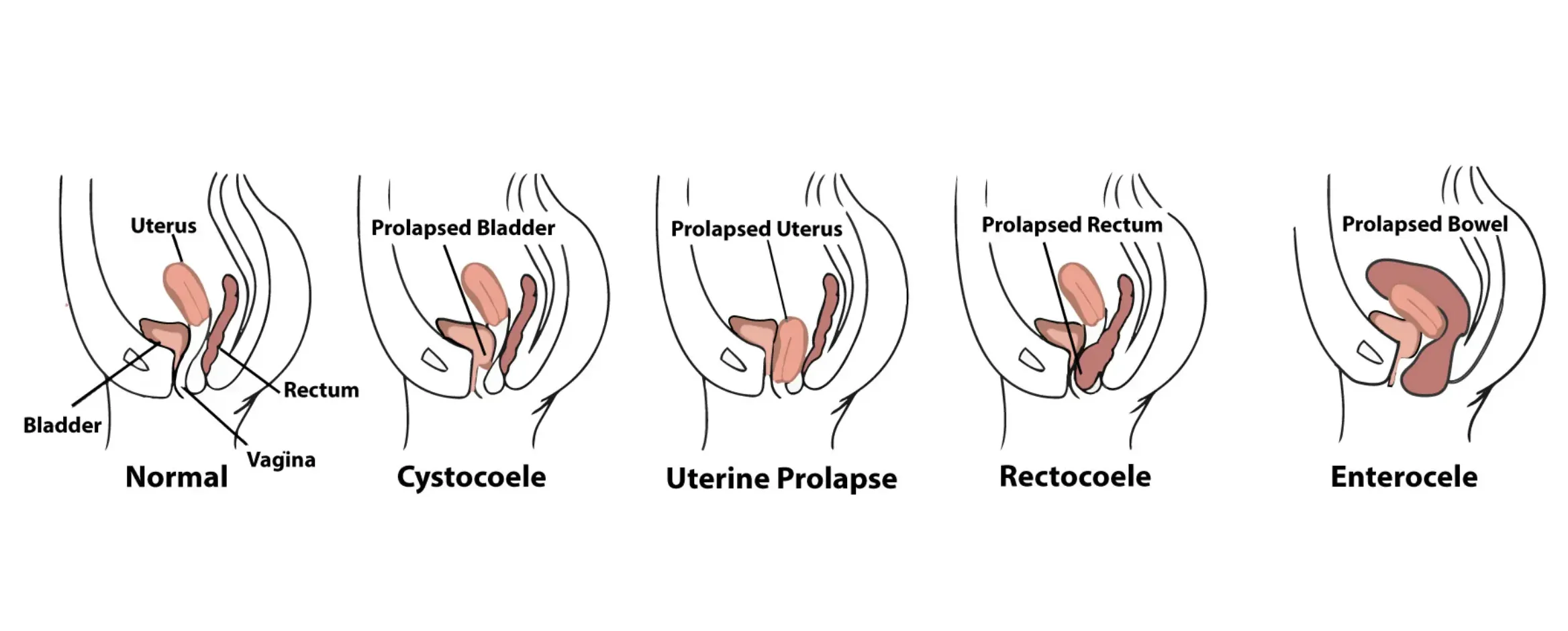
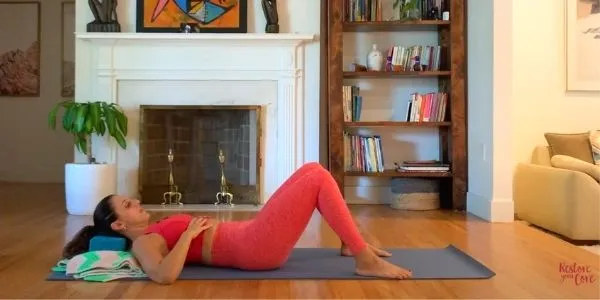
Postpartum physical therapy can be a great way to restore function and strength in your core and pelvic floor muscles. Giving birth places a strain on your body and it...

The postpartum recovery period typically lasts well beyond common expectations. Guiding and supporting your postpartum patients and clients through this transitional period requires effective strategies tailored to their individual needs....

Have you just had a baby, or are you about to give birth? Read on for pelvic floor exercises that facilitate faster postpartum recovery, enhance overall well-being, and improve long-term...
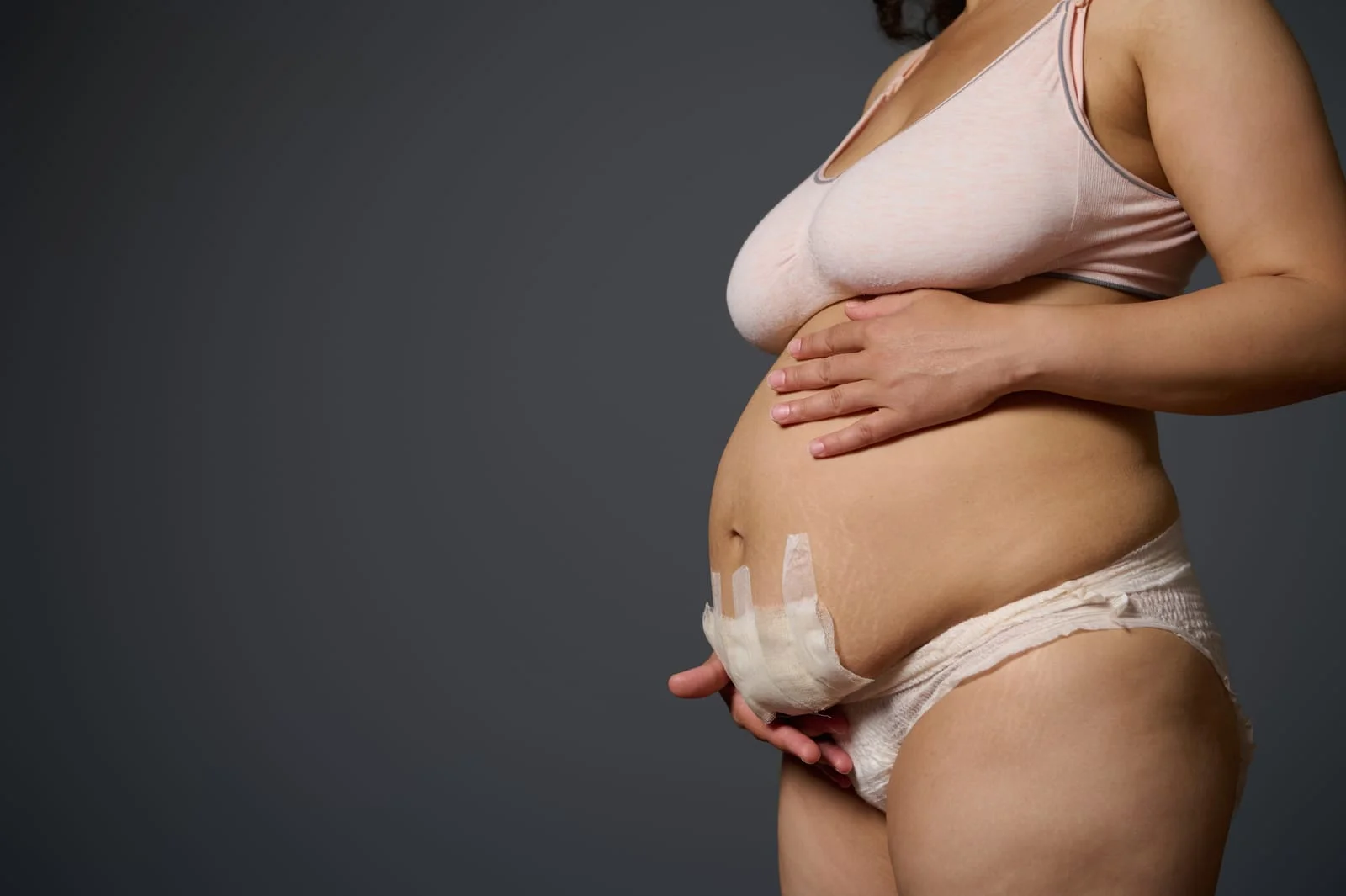
Introduction Pregnancy and delivery are a massive undertaking. Your body has to adapt and expand to allow the baby to grow, and having a C-section means you face a whole...

Giving birth takes a toll on your body – both physically and emotionally. Many postpartum people will feel overwhelmed and exhausted after giving birth, which can make it difficult to...

Before you begin any exercise routine, consult with your doctor for medical clearance. Practice patience with yourself and your body, and rest, lots of rest! I recommend waiting at least...
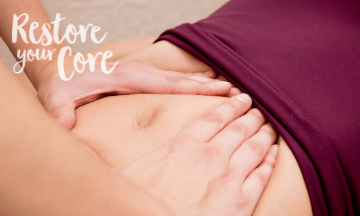
Post-pregnancy pain, whether it be pelvic floor pain or joint pain, is a shared experience among many postpartum people. However, postpartum pain, especially in pelvic pain, can vary in frequency,...

*No spam, just quality content and support
Please check your inbox soon.

Take 3 steps toward doing the things you love again postpartum
in this FREE video and get the support you deserve